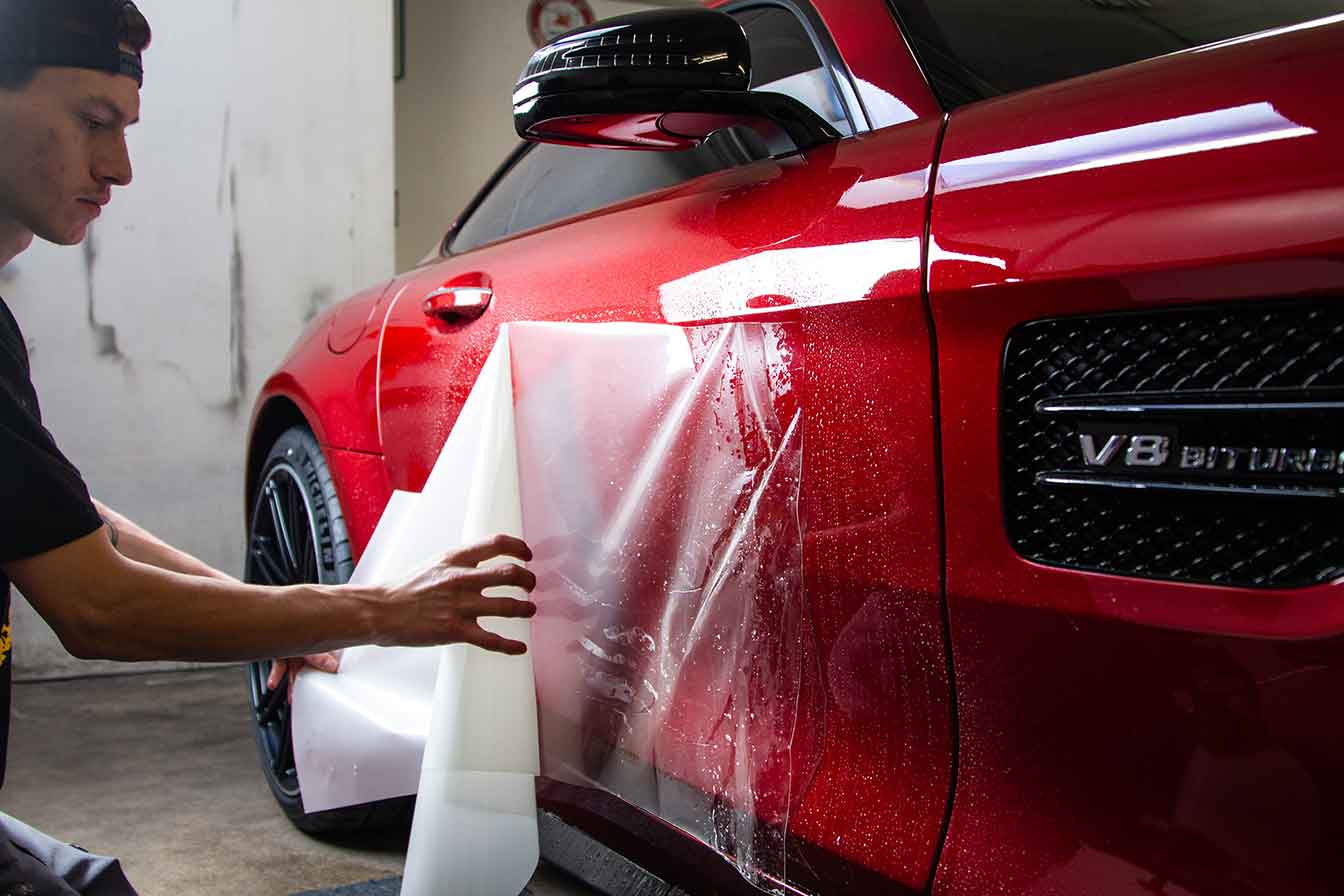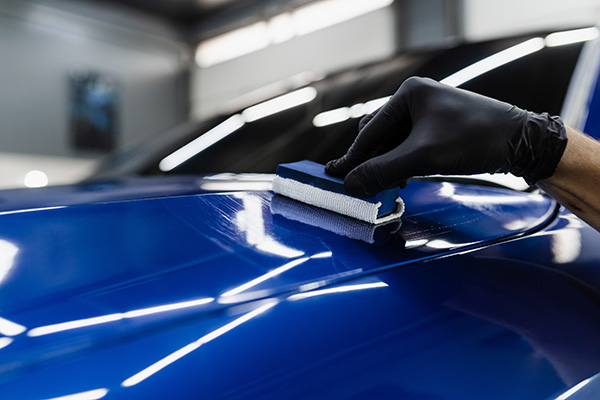Just How Ceramic Coating Can Secure Your Car from Environmental Damages
Just How Ceramic Coating Can Secure Your Car from Environmental Damages
Blog Article
The Value of Ceramic Coating: Shielding Your Vehicle's Exterior With Precision
In an era where preserving the visual and functional stability of your vehicle is vital, ceramic finishing emerges as an essential solution. With its unique bonding buildings, ceramic coating provides a degree of security that much exceeds typical waxing methods.
Benefits of Ceramic Coating
When it pertains to maintaining a vehicle's aesthetic charm, ceramic layer offers significant advantages. This innovative safety layer provides a durable shield versus ecological pollutants, consisting of dust, crud, and unsafe UV rays. By creating a semi-permanent bond with the lorry's paint, ceramic finishings properly protect against oxidation and fading, ensuring that the vehicle maintains a glossy, showroom-like coating for a prolonged duration. This not only enhances the vehicle's visual allure however likewise adds to its long-term value.
In enhancement to its safety qualities, ceramic finish offers remarkable hydrophobic residential properties, causing water and other fluids to grain off effortlessly. This attribute streamlines the cleansing process, as dirt and debris are less most likely to comply with the surface area, minimizing the frequency and effort needed for maintenance. The coating's resistance to chemical spots from acidic impurities like bird droppings and tree sap is an additional significant benefit, reducing possible paint damage.
Ceramic coverings also improve scrape resistance, giving a layer that can absorb minor abrasions and swirl marks. This characteristic is especially valuable in preserving a pristine surface, decreasing the likelihood of noticeable imperfections and protecting the honesty of the automobile's paintwork with time.

Just How Ceramic Covering Functions
Recognizing the technicians behind ceramic covering exposes its efficacy as a safety option for lorries. Ceramic coatings are essentially liquid polymer applications that chemically bond with a vehicle's manufacturing facility paint, producing a safety layer. This layer acts as an obstacle versus ecological pollutants such as gunk, dirt, and ultraviolet rays, which can degrade a car's exterior with time. The essential component in ceramic finish is silicon dioxide (SiO2), which stems from quartz crystals and is understood for its outstanding solidity and longevity.
Application of ceramic layer involves a precise process. This shield enhances the cars and truck's gloss and hydrophobic homes, facilitating much easier cleansing by triggering water and impurities to bead and slide off effortlessly.
In addition, the finishing's molecular structure gives resistance to minor scrapes and chemical discolorations. Unlike waxes or sealants that sit on top of the paint, ceramic layers integrate with the surface, offering resilient defense. This integration is essential to its effectiveness, making sure the automobile's finish stays immaculate for years.
Comparing Ceramic Coating to Alternatives
In the world of auto defense, ceramic coating stands as a formidable choice when compared to conventional options such as waxes and sealers. While waxes provide a short-term lustrous finish, generally lasting just a couple of weeks to months, ceramic finishes supply a longer-lasting remedy, usually withstanding for many years. This toughness is connected to the chemical bonding that takes place when ceramic layers are used, developing a solid layer that is resistant to ecological threats.
Contrastingly, sealers, although more resilient than waxes, still drop brief of the robust security used by ceramic finishings. Sealants can generally last for approximately a year, supplying a synthetic guard against certain components. Nevertheless, they lack the superior hydrophobic homes and UV security that ceramic finishings deliver.
In addition, ceramic coverings use improved scratch resistance, her comment is here which neither waxes nor sealers can effectively match. In summary, while traditional waxes and sealants use standard protection, ceramic coverings provide a thorough, long-lasting remedy that significantly protects the automobile and improves's exterior finish.
Application Process Discussed
Applying ceramic covering to an automobile requires a meticulous process to ensure optimal results and durability. As soon as cleaned up, the vehicle is dried out and polished to get rid of any type of blemishes, as any type of existing scrapes or swirls can become extra obvious after the layer is applied.
Following surface area preparation, the application of the ceramic layer begins. The covering is normally used in a climate-controlled environment to avoid dirt particles from picking the newly cleaned surface area. Using an applicator pad, the ceramic finish is applied in little areas to guarantee also coverage. It is vital to follow the maker's standards relating to the ideal treating time and application density.
After application, the finish needs a details healing duration, during which the automobile should be secured from water and impurities. This curing process can vary depending upon the item yet generally ranges from 24 to two days. Inevitably, this thorough process is pivotal in achieving a resistant and shiny finish.
Maintenance Tips for Durability
To preserve the longevity of a ceramic finish, adherence to a self-displined upkeep regimen is essential. Regular washing is extremely important; use a pH-neutral vehicle shampoo and soft microfiber mitts to avoid abrasions. Avoid automatic vehicle washes, as their harsh brushes my latest blog post can jeopardize the finish's honesty. Rather, select a hand laundry to make sure thorough yet mild cleansing.
Post-wash, drying the automobile with a tidy microfiber towel protects against water areas that may deteriorate the finishing with time. Additionally, use a ceramic finishing booster every few months. These boosters reinforce the hydrophobic residential properties and improve the coating's safety abilities, ensuring it remains reliable versus contaminants.
Maintain in mind that car park places play an essential duty in upkeep. ceramic coating. Whenever possible, park in shaded locations to minimize UV direct exposure, which can gradually damage the finish. For long-lasting storage space, think about making use of a cars and truck cover for added security versus environmental components
Final Thought
In verdict, ceramic covering serves as a critical safety layer for vehicle exteriors, offering long-lasting defense against environmental aspects such as uv, dirt, and grime rays. Recognizing the application process and adhering to upkeep suggestions are crucial for making the most of the longevity and effectiveness of ceramic covering.
When it comes to protecting a cars and truck's aesthetic charm, ceramic covering offers significant benefits. By developing a semi-permanent bond with the car's paint, ceramic finishings efficiently avoid oxidation and fading, ensuring that the car keeps a glossy, showroom-like finish for an extended duration. Ceramic finishings are essentially fluid polymer applications that chemically bond with a cars and truck's factory paint, developing a safety layer. In summary, while typical waxes and sealers you could try these out provide standard security, ceramic coverings present a thorough, long-lasting solution that dramatically improves and preserves the automobile's outside surface.

Report this page